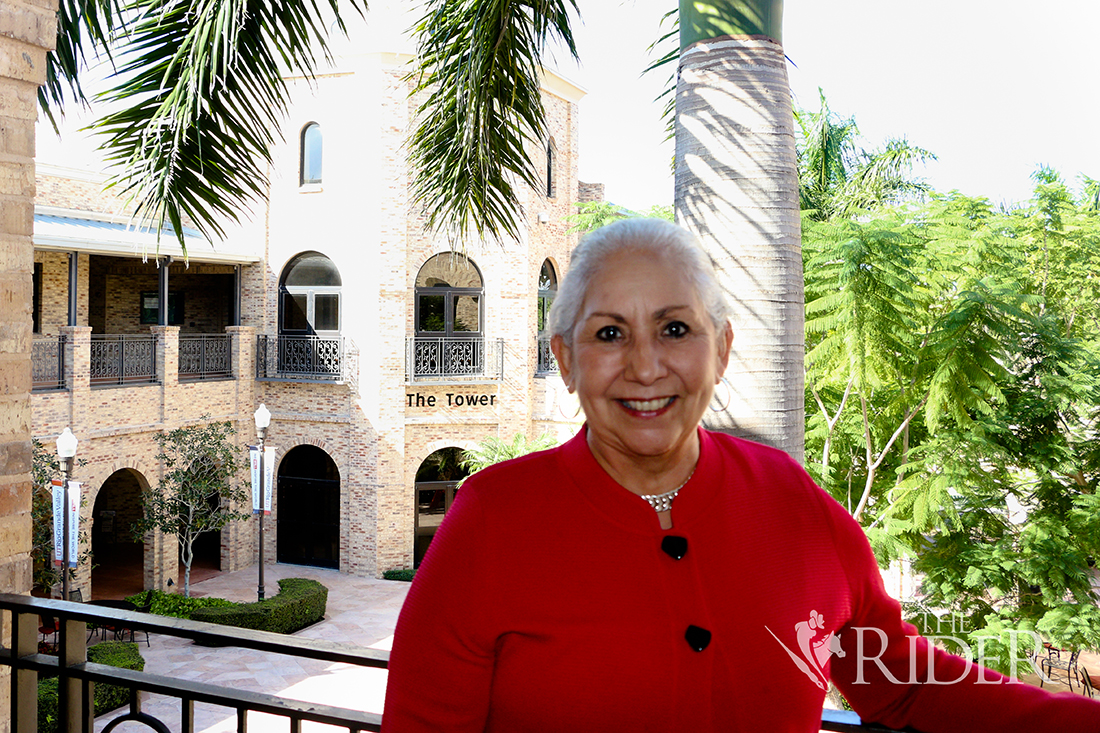
After nearly four years away from the day-to-day operations on the Brownsville campus, Juliet V. García will return to teach a communication class in Spring 2018 on the university grounds she helped build.
“I’m very excited about [returning to teach],” García said. “That’s where we all start, as professors at the university. It’s what I had always wanted to do. To return now, it’s a great privilege, so I’m very excited about returning.”
García is the former president of legacy institution UT Brownsville, where she served for 22 years, and Texas Southmost College. In 1986, she became the first Hispanic female to lead a U.S. college or university.
In Spring 2018, García will teach a course titled Rhetoric of the Border Wall: Up Against the Wall. The communication class will be a cross-listed course available for undergraduate and graduate students.
The main objective of the COMM 3315 and COMM 6329 courses will be the communication strategies used in the 2008 federal lawsuit against TSC and the University of Texas System.
“That perspective will be very important,” García said. “How did we choose to share information with people along the way? And we did. We were very strategic about the words we used, how we did it; we set up a particular website for the purpose of keeping people connected. I did open letters, sometimes I met with students directly, faculty directly, community members. I had to meet with politicians.”
In Fall 2007, Homeland Security sent a letter to García, asking her to allow the agency to survey university land for 18 months for the possible construction of a border fence.
The agency also stated in its letter that it would not be responsible for any damage done during that time by its activities and should it determine need for any university land, the university would be paid market value for the land, according a report published in the university’s student newspaper, The Collegian.
García refused to sign the letter granting Homeland Security the right of entry. Her reasons for refusing to sign the letter included the following:
–a risk to property investment
–the fence would jeopardize campus security
–building the fence structure would have a negative impact on the environment
The debate led to the U.S. government filing a lawsuit against the university on Feb. 8, 2008, to access the campus for surveying.
In March 2008, U.S. District Judge Andrew Hanen dismissed the border-fence lawsuit after a settlement was reached by the parties.
Part of the settlement reached with Homeland Security called for UTB/TSC to begin construction of a campus fence. The fence cost the UT System $1.4 million.
“This year happens to be the 10th anniversary of the establishment of the law that would build the border wall; it is called the Secure Fence Act,” García said. “It is appropriate, just from that respect, to go back and look at the implications of that law, why it was established, who supported it, what the intent was and what the impact of it was.”
In Fall 2018, García plans to teach a course titled Can Latinas Lead? The course will most likely be cross-listed as well, she said.
Under her leadership, UTB doubled its enrollment and produced about 35,000 college graduates.
UTRGV Communication Department Chair John Cook said he is thrilled to have García come back as a professor at the university.
“This is going to be a tremendous opportunity for students to learn from someone who is prominent not only at the local level, but at the state and national level,” Cook said. “Her wealth of experience, and her knowledge and her capacity as a communicator is unrivaled. It’s tremendous. I’m so grateful that she’s going to be part of it.”
William F. Strong, a communication professor at UTRGV, has known García for more than 30 years. He worked with her from 2000 to 2005 as UTB/TSC’s Institutional Advancement vice president.
“Her focus as president that I admired so much was that she was myopically focused on bringing opportunity to the students of this region so that they can transform their lives through education,” Strong said.
Asked about his thoughts on García’s return to the Brownsville campus, Strong replied by saying he is “delighted.” García will join Strong as a professor in UTRGV’s Communication department.
Strong told The Rider García’s drive and leadership is what helped bring the University of Texas System education services and opportunities to Brownsville, which, ultimately, assisted in the creation of UTRGV.
“I don’t think that UTRGV, as we know it today, would exist without her and without her paving the way for, you know, the rather impressive institution that we have today, and I think Brownsville itself would be dramatically different,” he said. “It might be poorer, you might say, in terms of opportunity … in terms of its economic growth. It would not be anywhere near what it is today if it weren’t for her presence in the city.”
García’s hard work and success has led her to receive numerous accolades throughout her career, including a 2009 Time magazine recognition as one of the top 10 college presidents in the nation and being named one of Fortune magazine’s top 50 world leaders in 2014.
During her time away from the university, García served as a senior adviser to UT System Chancellor William McRaven for community, national and global engagement.
Her job at the UT System required her to travel between Austin and Brownsville. However, that did not stop García from visiting and walking across an empty Brownsville campus Sunday mornings.
Although it is nice to see the changes the Brownsville campus has gone through during her Sunday morning walks, García said she is looking forward to having direct contact with students on a day-to-day basis.
“It is wonderful to be able to come back on campus, but not just to walk on campus, but to be part of this next generation of developing leaders,” she said. “We would not be able to finish our job if all we did was use our moment to do what we thought was important. The real work I think we have, and the most important work, is how we help others become the leaders for the next generation.”





